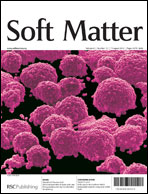Hydrogels are important and very promising materials for biomedical applications, such as cell scaffolds and drug delivery systems. A new class of injectable materials was obtained by mixing polysaccharide chemically crosslinked hydrogels. The mixing was performed by exploiting the thixotropic behaviour of the polysaccharide hydrogels: in other words they were passed through a syringe to subject them to shear stress and render them fluid, then they were mixed together in the fluid state. Once the material regained its consistency, a new hydrogel was obtained, called an inter-penetrating hydrogel (IPH), containing both the native hydrogels.
This new class of materials showed different physical-chemical, mechanical and biological properties from the native hydrogels utilized for the mixing. The hydrogels taken into consideration were: negatively charged carboxy methyl cellulose (CMC) and hyaluronic acid (Hyal), uncharged guar gum (GG), and chitosan (CHT), which bore positive charges at physiological pH. The IPHs obtained – i.e. CMC-CHT, CMC-GG and CMC-Hyal – were characterized by means of Fourier transform infrared spectroscopy (FT-IR) and swelling measurements. The mechanical properties of the IPHs were investigated by rheometric analyses, while their morphology was studied by scanning electronic microscopy (SEM). The biological performance of the IPHs was evaluated using fibroblasts (NIH 3T3 cell line) and compared with that of the native hydrogels.


 Please wait while we load your content...
Please wait while we load your content...